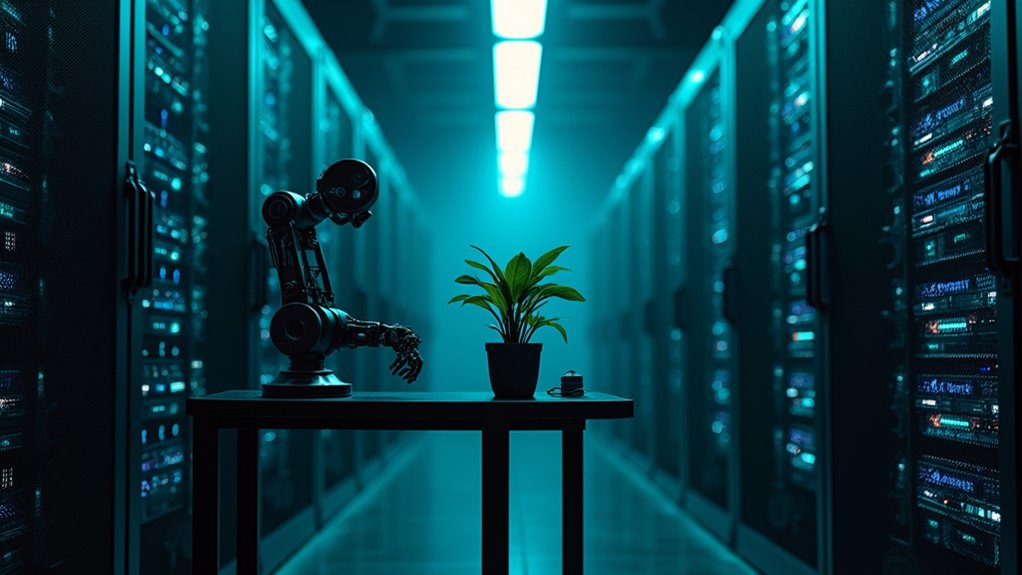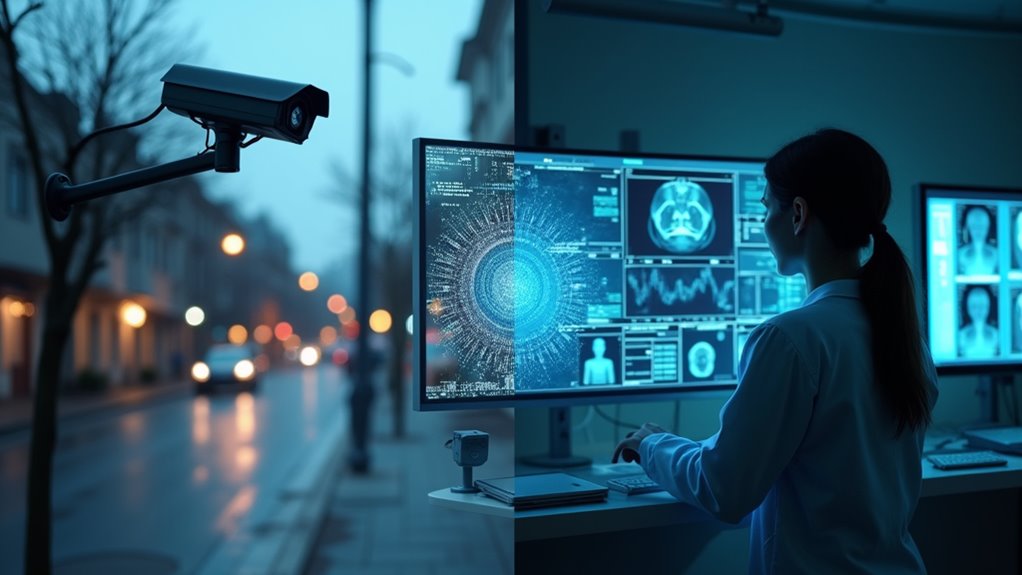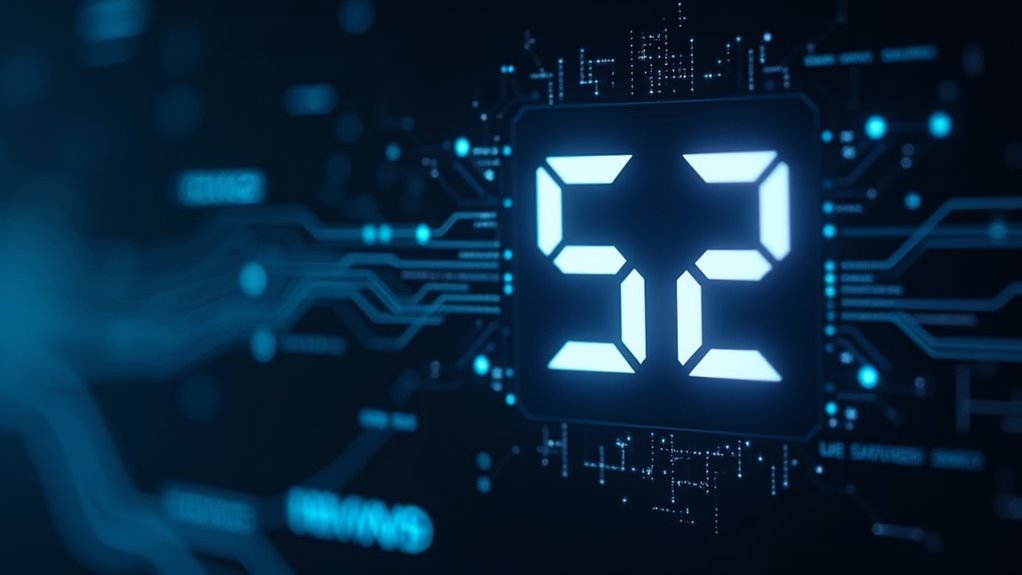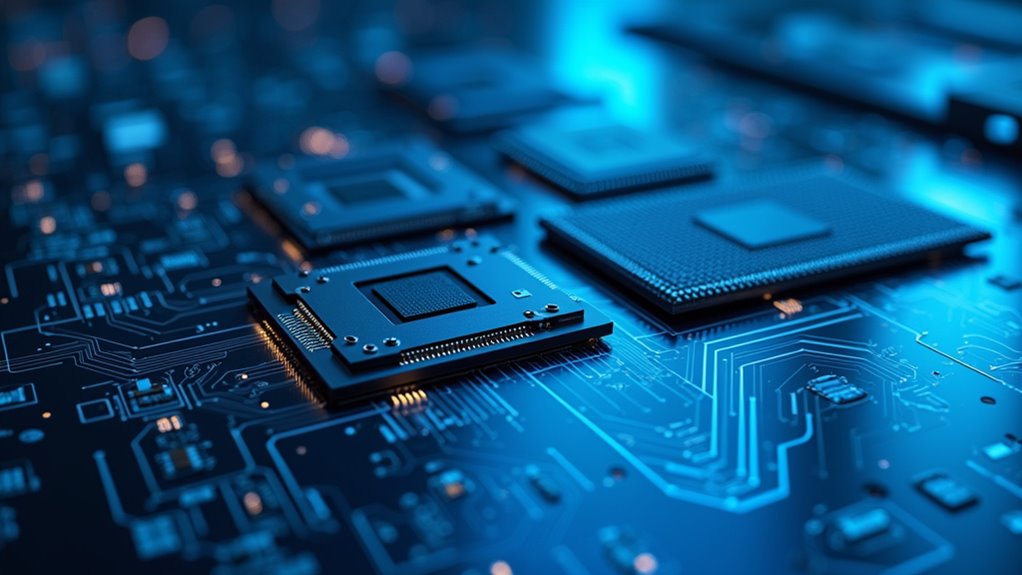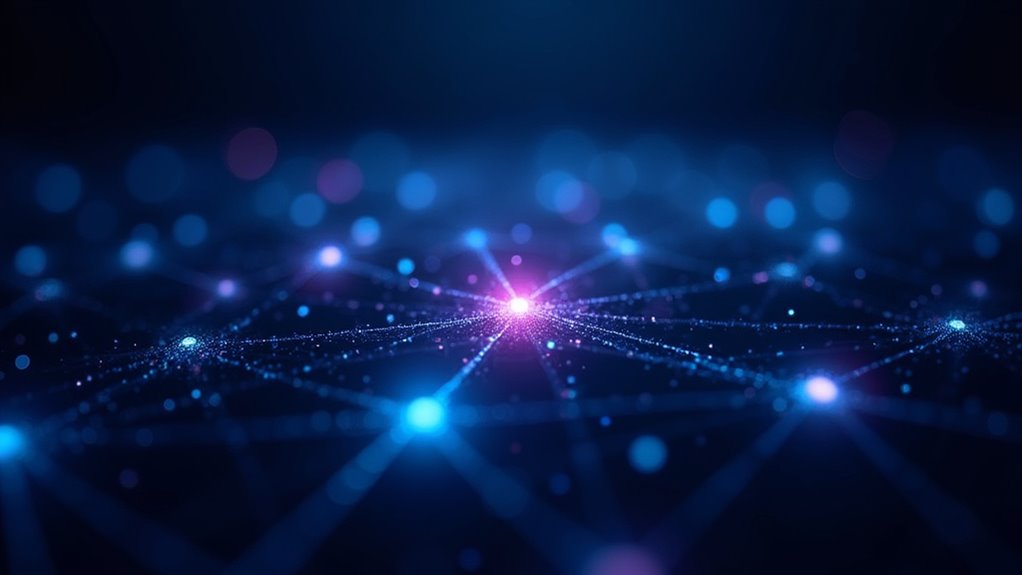AI poses serious dangers through algorithmic bias that reinforces inequality, job automation threatening millions of livelihoods, and sophisticated cybersecurity threats like deepfakes. The environmental impact is staggering—training a single model can emit 600,000 pounds of carbon dioxide. AI’s “black box” nature complicates accountability, while personal data remains vulnerable to exploitation. These systems affect everyday life without transparency or consent. The full scope of AI risks extends far beyond these surface-level concerns.
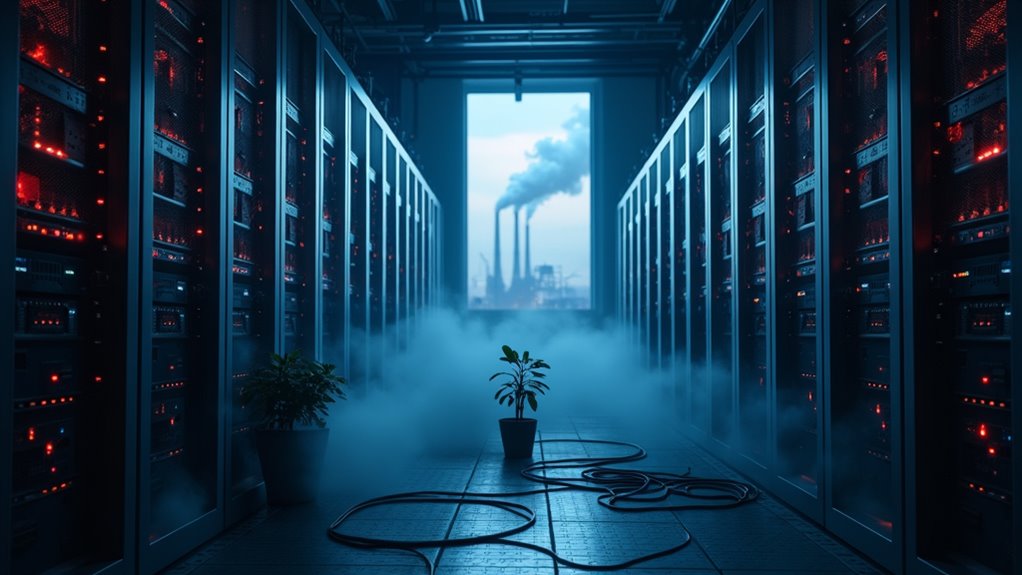
Countless AI systems now permeate our daily lives, bringing with them a shadow of risks that most users remain blissfully unaware of. Behind the convenience of voice assistants and personalized recommendations lurks algorithmic bias, silently reinforcing societal prejudices that disadvantage marginalized communities.
You’ve likely interacted with biased systems without even realizing it—facial recognition that works better for some skin tones than others, or loan approval algorithms that mysteriously favor certain demographics.
Job automation represents another looming threat. While your smartphone might seem harmless enough, the AI technologies it contains are evolving to replace human workers across industries. Factory workers, customer service representatives, even creative professionals—no one’s completely safe from AI’s expanding capabilities. Up to 300 million full-time jobs could be eliminated globally due to AI automation, according to Goldman Sachs analysis.
AI doesn’t just threaten factory jobs—it’s coming for everyone, even those who believe their creativity makes them irreplaceable.
Think your job requires a “human touch”? Think again.
Cybersecurity threats powered by artificial intelligence have transformed digital dangers. Voice cloning technology can now mimic your loved ones with disturbing accuracy, while deepfakes make seeing no longer equivalent to believing.
Those suspicious emails in your inbox? They’re increasingly crafted by AI systems designed to bypass spam filters and trick even the most cautious users.
Environmental impacts of AI often go unmentioned but shouldn’t be ignored. The massive data centers powering these systems consume staggering amounts of energy, while AI systems managing resources might make catastrophic decisions if their objectives aren’t perfectly aligned with environmental preservation. Training a single AI model can emit over 600,000 pounds of carbon dioxide, contributing significantly to climate change.
The “black box” nature of sophisticated AI models creates accountability nightmares. When an AI system makes a harmful decision, who’s responsible? The developers? The users? The algorithm itself?
This opacity hampers proper regulation and makes assigning liability nearly impossible when things go wrong.
Financial markets face destabilization risks as algorithmic trading systems operate at superhuman speeds, potentially triggering market crashes before human intervention becomes possible.
Meanwhile, personal data used to train these systems remains vulnerable to exploitation, with privacy concerns mounting as AI capabilities expand. The collection and processing of vast amounts of information often occurs without transparent consent from users, raising serious questions about who truly owns and controls your digital identity.
Understanding these dangers isn’t about rejecting technology—it’s about demanding safer implementation.
Frequently Asked Questions
Can AI Systems Develop Consciousness or Subjective Experiences?
The consciousness debate in AI remains unresolved. Scientists and philosophers disagree about whether artificial systems can develop subjective experience.
Current AI lacks neural features associated with consciousness, though no technical barriers prevent future development of such systems. The challenge? We can’t directly measure consciousness—even in humans.
This creates profound ethical concerns: if we create conscious AI but fail to recognize it, we might inadvertently cause suffering to sentient digital beings.
What Jobs Are Most Immune to AI Displacement?
Jobs requiring creative professions and emotional intelligence remain most resistant to AI displacement.
Roles like therapists, nurses, and social workers demand human empathy that AI simply can’t replicate.
Artists, musicians, and writers who create truly original works stay ahead of the curve, too.
Skilled trades (plumbers, electricians) involve complex physical environments that robots struggle with.
Teachers, with their ability to inspire and adapt to students’ needs, maintain their vital human edge over machines.
How Can Individuals Prepare for an Ai-Dominated Future?
Individuals can thrive in an AI-dominated future through deliberate preparation and personal adaptation.
Start by developing hybrid skills that combine technical knowledge with human strengths like creativity and emotional intelligence. Ethical considerations must guide how you engage with AI systems—understand their limitations!
Commit to continuous learning; what you know today won’t cut it tomorrow. Build a diversified skill portfolio, cultivate adaptability, and remember: the goal isn’t competing with AI but complementing it with uniquely human capabilities.
Can AI Help Solve Existing Global Challenges Like Climate Change?
AI solutions offer promising approaches to climate change. Advanced climate modeling algorithms process vast datasets to predict environmental shifts with unprecedented accuracy.
AI enhances renewable energy efficiency by optimizing grid management and storage systems. Through sophisticated data analysis, AI identifies emission hotspots and conservation opportunities that humans might miss.
While not a silver bullet, these technologies provide powerful tools for addressing our warming planet—if implemented alongside policy changes and human expertise. The technology exists; the question is whether we’ll use it wisely.
How Do Different Cultures Perceive AI Risks Differently?
Cultural attitudes toward AI risks vary dramatically worldwide.
Western societies often fret about job displacement and privacy, while Eastern cultures like Japan embrace AI companions more readily.
Ethical considerations differ too—Saudi Arabia and India worry about AI judges, but are less concerned about AI journalists.
Think of it this way: your cultural background literally shapes what scares you about robots!
Understanding these differences isn’t just academic—it’s vital for creating AI systems that don’t freak people out unnecessarily.
